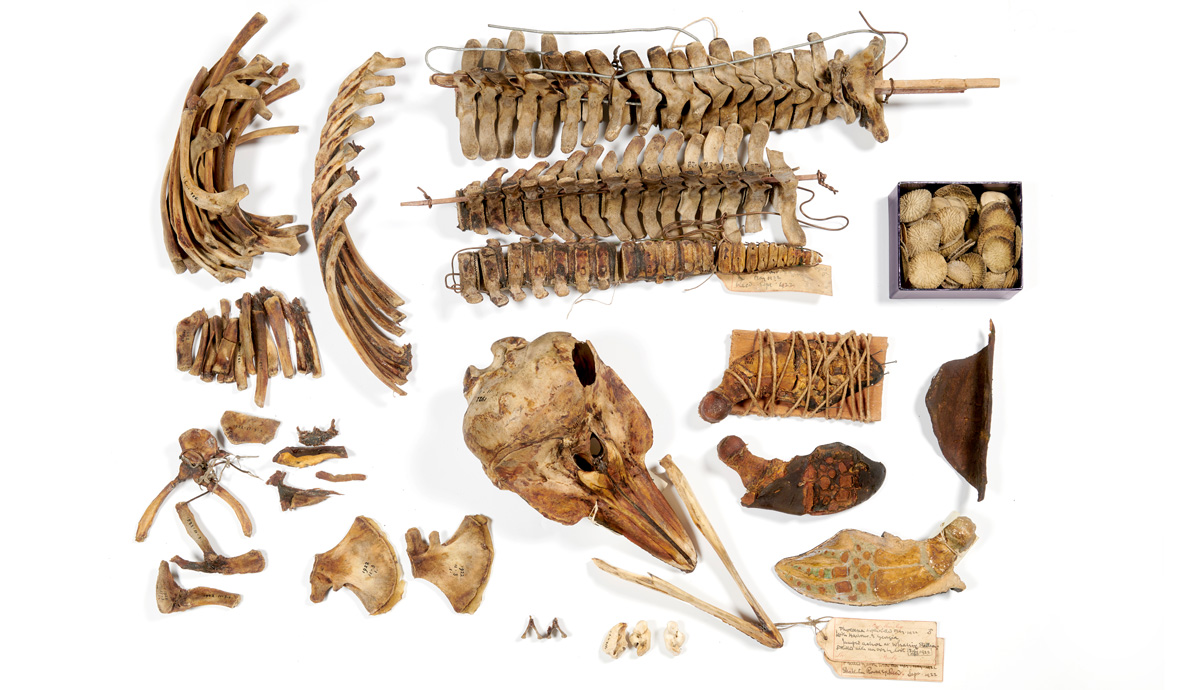This two-year project is led by AHRC Early Career Research Fellow Dr Sophia Nicolov, who works closely with the Cetacea collection and the Principal Curator of Mammals, Richard Sabin, a marine mammal expert.
It is an environmental history project investigating how British colonial exploration, territorial and administrative expansion, and industrial whaling in the Southern Hemisphere contributed to the Museum’s Cetacea collection.
Cetacean specimens were acquired through various means, including expeditions, scientists, commercial whaling and strandings. Natural history specimens provide scientific, historical and cultural evidence for the moment of collection and the worlds in which explorers, scientists and whalers were active. This can reveal the attitudes and material relationships that shaped human and nonhuman lives.
Whale, dolphin and porpoise specimens trace the histories and legacies of British imperial presence in the Southern Hemisphere and the colonial roots of acquisitions. Cetaceans were circulated through transoceanic networks of trade, science and empire from the nineteenth century to the second half of the twentieth century.
The project brings to light the main drivers and influences on collecting cetaceans, charting how the collection of whales and other cetaceans was shaped by changing empires, animal populations and ecosystems. It also reinforces the changing significance of Cetacea specimens since the late twentieth century, and their vital role for scientific research on the past, present and future of species as new techniques continue to evolve.
This project investigates three key areas. Firstly, the expansion and consolidation of the British Empire in the Southern Hemisphere in the nineteenth century through expeditions and settler-colonialism, including the establishment of new natural history museums.
Secondly, the so-called ‘Heroic Age’ of Antarctic exploration (1897-1922), a major imperial project laying claim to distant territories and prospecting for commercial resources, including whaling.
Thirdly, industrial whaling in the twentieth century. Whaling was an imperial industry, contributing to the expansion of the empire and consolidation of its presence. Many Cetacea specimens held by the Natural History Museum reveal the early preoccupations with population declines and extinction by key figures at the Museum.
A key focus of the project is the Discovery Investigations, a series of expeditions and a programme of scientific study funded by the Colonial Office to research the impact of Antarctic whaling and collect specimens.
Senior figures at the Natural History Museum organised this and received and worked on data and specimens. In the 1960s, the Whale Research Unit of the Institute of Oceanographic Sciences was set up during the Discovery expeditions and was established at the Museum to work on data collected. In 1999, it donated specimens to the Museum. The Institute of Oceanographic Sciences eventually became the National Oceanography Centre, the archives of which are held by the National Oceanographic Library at the University of Southampton, our partners in this project.
Aims
This project will contextualise relevant specimens within their colonial legacies, reconnecting them with their places of origin as constructed by empire and whaling.
It aims to demonstrate the value of environmental history in reinterpreting natural history specimens and reinforce it’s contribution to understanding and confronting the histories and legacies of wildlife exploitation, biodiversity loss, British Empire and conservation. In doing so, it will contribute to building the capacity for arts and humanities research at the Natural History Museum. It also aims to engage different researchers and audiences nationally and internationally with the complex and multi-layered significances of the Cetacea collection. It also aims to broaden understanding, centralise information and make specimens more accessible.
Methods
This project is primarily grounded in environmental history. It also draws on the interdisciplinary environmental humanities, history of science, museum and heritage studies, postcolonial and Indigenous studies, and scientific research.
It is a mixed-method project and specimen-led research with close curatorial support. Archival research is the major means of data collection. This project also involves digitisation of specimens through photography, 3D scanning and enriched database records.
Who is involved?
The National Oceanographic Library at the University of Southampton is a project partner. The National Oceanographic Library holds the archives of the National Oceanography Centre.
Our role
The Natural History Museum is the host organisation for Dr Sophia Nicolov as part of the AHRC scheme Early Career Research Fellowships in Cultural and Heritage Institutions’. She is based in the Vertebrates Division and is mentored by Richard Sabin, Principal Curator in Mammals. This project falls under the research theme Collections and Culture.
